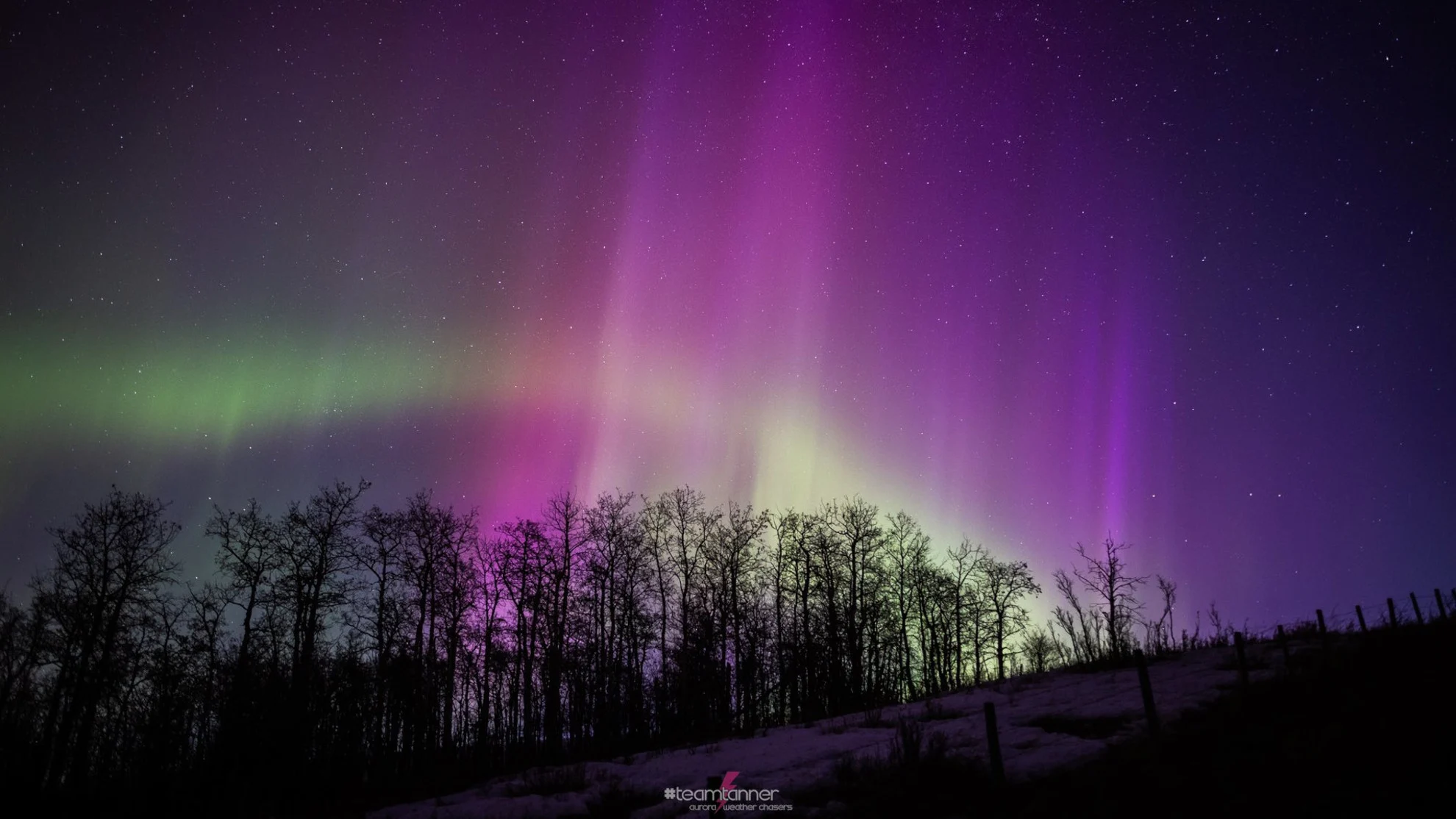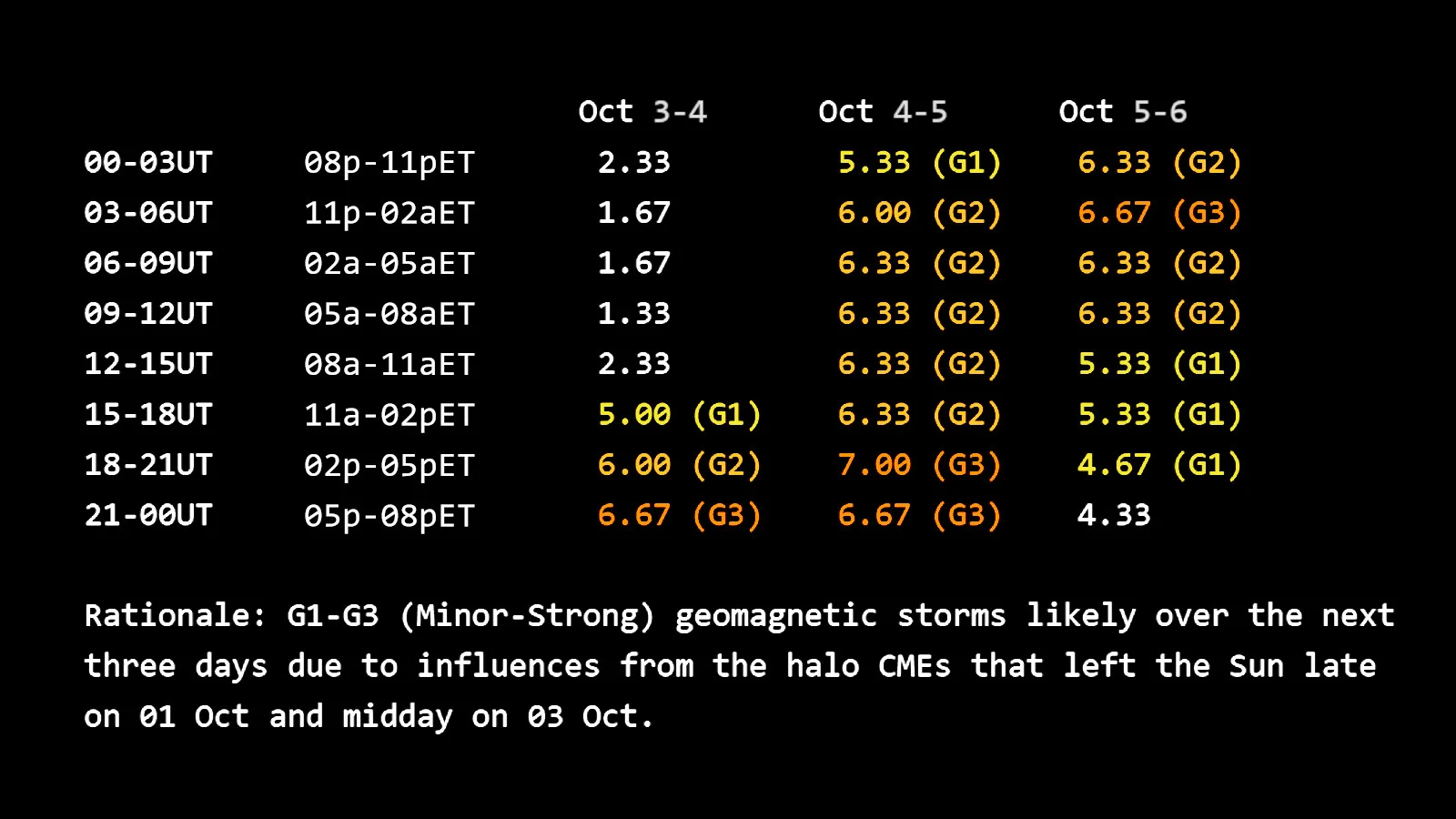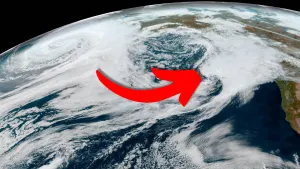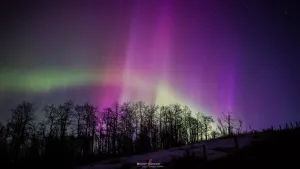
Northern Lights to shine this weekend following back-to-back solar storms
Thursday's extreme solar activity means more opportunities to see the Northern Lights this weekend!
Keep your eyes on the night sky over the weekend! The Aurora Borealis may put on an exceptional display both Friday and Saturday nights, which could be visible across all of Canada and the northern United States.
Even as we were anticipating some excellent displays of the Aurora Borealis over Canada on Thursday and Friday night, even more extreme solar activity is giving us the chance to see auroras throughout this weekend. What we witness could rival the best shows the Northern Lights have put on in decades.
Early on Thursday, October 3, sunspot group AR3842 exploded once again, producing an X9.0-class solar flare. This is now the strongest flare so far in Solar Cycle 25, and the most powerful seen since September 2017. AR3842 is the same sunspot that emitted an X7.1 strength flare on Tuesday, as well as the solar storm that was expected to generate auroras across Canada towards the end of the week.

Sunspot group AR3842, also shown in closeup (centre), is responsible for all of the aurora activity this week. (NASA SDO/Scott Sutherland)
Following this extreme flare, satellite imagery picked up another coronal mass ejection erupting from the Sun.
Unlike the CME from Tuesday's flare, which only showed up faintly to satellite instruments, this new one was hard to miss.

Three coronagraph images, captured by the Solar and Heliospheric Observatory, show 'billowing' clouds of solar material expanding away from the Sun on October 3, 2024. The Sun is located within the white circle at the centre of these views, its direct light blocked by the small coronagraph disk positioned in front of the camera lens (the blank region at the centre of each frame). The extremely bright white regions to the upper right and below the coronagraph disk are due to solar particles streaming into space from coronal holes. The field of stars is visible in the background, while the bright dot and line to the upper left of the Sun is the planet Mercury in the camera's field of view. The dark diagonal line towards the bottom left is the arm of the coronagraph disk. (NASA/ESA)
READ MORE: Solar max is nearly here! Here’s how and where to see the Northern Lights
Aurora Forecast
According to NOAA's Space Weather Prediction Center, the CME from Tuesday is arriving later than initially predicted, and should reach Earth around midday (EDT) on Friday. As that solar storm passes, geomagnetic activity is expected to increase, reaching G3 (strong) levels by early evening (EDT), possibly diminishing to G1 (minor) levels in the hours before midnight (EDT). The timing of these initial G3 levels favour the east coast of Canada for auroras just after sunset.
Following that, SWPC anticipates levels to increase again to G2 (moderate) and remain at that strength for much of Saturday. Auroras will likely be visible across the Prairies, western Canada, southwestern parts of Northwest Territories, and southern Yukon overnight Friday into Saturday.

SWPC's Kp index forecast for October 4-6, 2024, with levels expected to peak at G3 (strong) both Friday and Saturday, and an extended period of G2 (moderate) geomagnetic storm levels throughout the day on Saturday. With these forecast periods being three hours each, the value presented is an average for each of those time periods. Shorter periods of weaker and stronger storm levels are possible within each 3-hour block of time. (NOAA SWPC)
DON'T MISS: How to get the most out of auroras, meteor showers, and other night sky events
Thursday's CME is expected to arrive around midday on Saturday, potentially causing a second bump up to G3 (strong) geomagnetic storm levels, which could persist for several hours Saturday night.
With Earth's geomagnetic field still recovering from the initial CME impact at the time, there is potential for this second solar storm to ramp up conditions even higher at times throughout the night.

The green swath on this map represents the highest probability of auroras appearing overhead Friday night through Saturday morning, with the yellow arc being the farthest southerly extend, where auroras could be seen along the northern horizon. If geomagnetic storm levels increase beyond the predicted G3 (strong), the viewing potential will shift farther south. (The Weather Network, data from NOAA SWPC)
The full potential for auroras will be challenging to predict until these CMEs pass the satellites positioned at Lagrange Point 1, a million and a half kilometres out from Earth. Once they sweep past L-1, instruments on the SOHO, ACE, WIND, and DSCOVR satellites can send back a variety of data to improve the aurora forecast. Additionally, given the time of year, there is the potential for auroras to be enhanced by a phenomenon known as 'equinox cracks' — where gaps form in Earth's magnetic field around the March and September equinoxes, which allow more particles from the solar wind and CMEs to pour into Earth's atmosphere.
Stay 'tuned' for more updates!
Thumbnail image courtesy Tree and Dar Tanner, of TeamTanner Aurora and Weather Chasers, who captured this view of the Northern Lights from central Alberta in March of 2023.










